Catalogue > List by artist
Browse the entire list of Rencontre Internationales artists since 2004. Use the alphabetical filter to refine your search. update in progress
Mona Vatamanu, Florin TUDOR
Catalogue : 2020Fire is Always the Same | Video | hdv | color | 19:27 | Romania | 2019
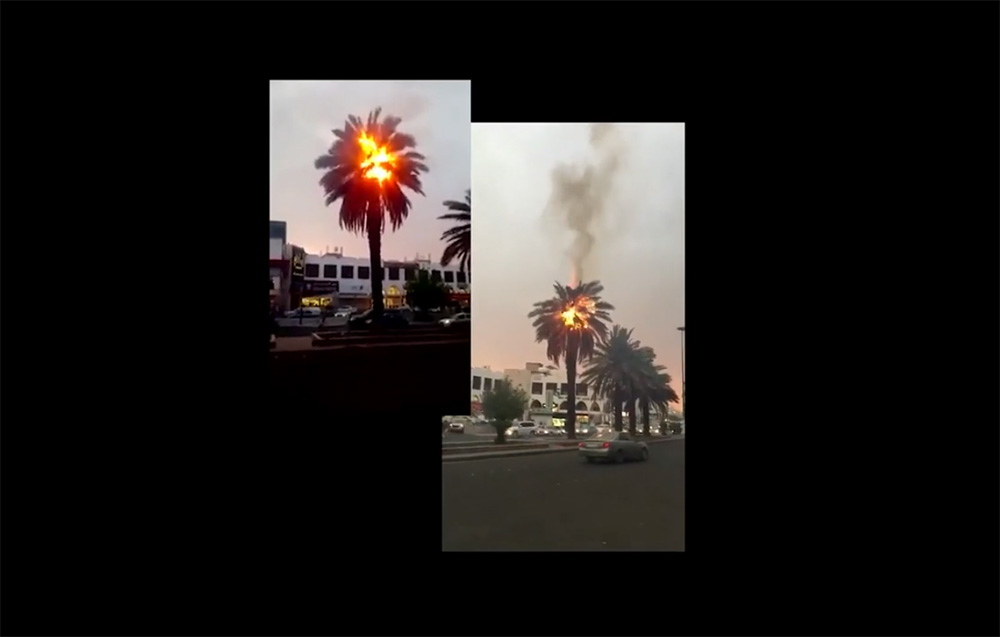
Mona Vatamanu, Florin TUDOR
Fire is Always the Same
Video | hdv | color | 19:27 | Romania | 2019
Mona Vatamanu & Florin Tudor, born 1968/1974, work together since 2000. Based in Bucharest, currently living in Berlin (DAAD Berliner Kunstlerprogramm). Selected Solo Exhibitions: 2009 - Mona Vatamanu & Florin Tudor, All Power to the Imagination!, Secession, Grafischess Kabinett, Vienna; Mona Vatamanu & Florin Tudor, Surplus Value, BAK, basis voor actuele kunst, Utrecht; 2003 - Living Units, Project Room, Ludwig Museum, Budapest. Selected Group Exhibitions : 2011 - Untitled (12th Istanbul Biennale), Istanbul; Call the Witness, Roma Pavilion Collateral Event, 54th Venice Biennale, Venice; Image projected until it vanishes, Museion, Bolzano; 2010 - Flying Down to Earth, FRAC Lorraine, Metz; Modern Dialect, M HKA, Museum of Contemporary Art, Antwerp; Shockworkers of the Mobile Image, 1st Ural Industrial Biennial, Ekaterinburg; Over the Counter, Mucsarnok Kunsthalle, Budapest; 2008 - 5th Berlin Biennial, When Things Cast No Shadow, KW Institute for Contemporary Art, Berlin; 6. Gyumri Biennial, Transformation of History or Parallel Histories, Gyumri; Art as Gift, Periferic Biennial 8, Iasi; Like an Attali Report, but different, On fiction and political imagination, Kadist Art Foundation, Paris; 2007 - 52nd Venice Biennial, Romanian Pavilion, Low-Budget Monuments, Venice.
Regina Vater, Regina Vater
Catalogue : 2020Sleeping Beauty | Experimental fiction | super8 | color | 7:44 | Brazil | 1982
Regina Vater, Regina Vater
Sleeping Beauty
Experimental fiction | super8 | color | 7:44 | Brazil | 1982
Sleeping Beauty was poetically made in Super8 later digitalized and it was inspired by a short story I wrote in Paris in 1973 about a woman who waits eternally for her lover who never shows up.
Regina Vater is one of the pioneers in the use of video as an art form. Her first work in video, shot in Paris in 1974 upon the invitation of Ruth Escobar, was a poetic documentary about Escobar’s theater group from S.Paulo, which was later finished by Andrea Tonachi. Regina made her second video, “Miedo”, in 1975, sponsored by CAYC of Buenos Aires. Most of her extensive video work was realized with very limited budget. Her videos were shown in several American festivals. Examples of the many awards and honors her work has received are, among others: honors from the American Film Institute; the Best of ACTV Programming; Video Travel Grants Pilot From the Arts International & National Endowment; "My Own Home Town" award for video; GPIA grant from Program for Interdisciplinary Artists - Southwest Alternate Media Project and New Jersey Council for the Arts Fellowship.As an artist, Regina has also received many other international awards, such as a Guggenheim Fellowship in 1980 which brought her to the U.S. From 1980 to 1985, she lived, worked and had many shows in New York. Regina lives and work in Rio de Janeiro Brazil.
Emilio Vavarella
Catalogue : 2022Genesis (The Other Shapes of Me) | Video | 4k | black and white | 21:36 | Italy | 2021
Emilio Vavarella
Genesis (The Other Shapes of Me)
Video | 4k | black and white | 21:36 | Italy | 2021
The film Genesis (The Other Shapes of Me) is simultaneously a part of the installation rs548049170_1_69869_TT as well as a stand-alone art film. The film documents a year-long performance during which a large piece of fabric that codifies and contains all of my genetic information is woven by my mother on one of the first computers of history, the Jacquard loom. In the tension between the loving gestures of a mother and the automatic movements of a mechanical loom, Genesis gives form to my reflections on technical reproducibility, the materiality of information, and on the interplay between biological, mechanical and computational life. The series The Other Shapes of Me is based on the translation of my genetic code into fabric. This stratified series of interrelated works is the result of my research into the origin and current applications of binary technology: from weaving to programming, algorithms, software, automation processes, up to the complete computerization of a human being.
Emilio Vavarella is an Italian artist working at the intersection of interdisciplinary art practice, theoretical research and media experimentation. His work explores the relationship between subjectivity, nonhuman creativity and technological power. It is informed by the history of conceptual art, digital and network cultures, and new media practices. Vavarella moves seamlessly between old and new media, and exploits technical errors and other unpredictabilities to reveal the logic and the hidden structures of power. Esteemed venues that have exhibited Vavarella’s work include: MAXXI – Museo nazionale delle arti del XXI secolo; KANAL – Centre Pompidou; Hermitage Museum in St. Petersburg; MAMbo – Museo d’Arte Moderna di Bologna; Museum of Contemporary Art – Zagreb; Museu de Ciències Naturals of Barcelona, The Photographer’s Gallery of London, Museo de Arte de Caldas; Museo Nacional Bellas Artes in Santiago; Museu das Comunicações of Lisbon, National Art Center of Tokyo; Eyebeam Art and Technology Center and Museum of Contemporary Art Vojvodina. His artworks have been exhibited at film festivals such as Toronto’s Images Festival; Torino Film Festival, and the St. Louis International Film Festival, and at many international media art festivals, among which: EMAF – European Media Art Festival; JMAF – Japan Media Arts Festival; Stuttgarter Filmwinter – Festival for Expanded Media; BVAM – Media Art Biennale; and NYEAF – New York Electronic Arts Festival. Vavarella has been awarded numerous art prizes and grants, among which the Exibart Art Prize (2020); Italian Council award (2019); Premio Fattori Contemporaneo (2019); SIAE – Nuove Opere (2019); the NYSCA Electronic Media and Film Finishing Funds grant (2016); the Francesco Fabbri Prize for Contemporary Art (2015) and the Movin’Up Grant (2015). He has been invited to present his work at: Harvard Advanced Leadership Initiative; Istituto Italiano di Cultura – New York; ISEA – International Symposium on Electronic Arts; Goldsmiths University of London; the University of East London; the School of the Art Institute of Chicago; and SIGGRAPH. His academic writings have been published in peer-reviewed journals such as Leonardo – The Journal of the International Society of the Arts, Sciences and Technology (MIT Press), Digital Creativity (Routledge), and CITAR Journal – Journal of Science and Technology of the Arts. His writings have also appeared in Behind the Smart World: Saving, Deleting and Resurfacing Data produced by the AMRO Research Lab and in exhibition catalogues like Low Form: Imaginaries and Visions in the Age of Artificial Intelligence (MAXXI and CURA Books); That’s IT! (MAMbo), and Robot Love (Niet Normaal Foundation). His work is regularly discussed in art magazines, academic books and peer-reviewed journals, and has been covered by all major global media outlets. His most recent artist book, published by Mousse, is entitled rs548049170_1_69869_TT. Vavarella is currently working toward a PhD in Film and Visual Studies and Critical Media Practice at Harvard University and is the artist in residence of the Broad Institute of MIT and Harvard. He holds an M.A. cum laude in Visual Arts from Iuav University of Venice, with study abroad fellowships at Bezalel Academy of Arts and Design, Tel Aviv and Bilgi University of Istanbul and received a B.A. cum laude in Visual, Cultural, and Media Studies from the University of Bologna.
César Vayssié
Catalogue : 2025Ricorda ti che è un film comico | Experimental fiction | hdv | color | 130:0 | France | 2024
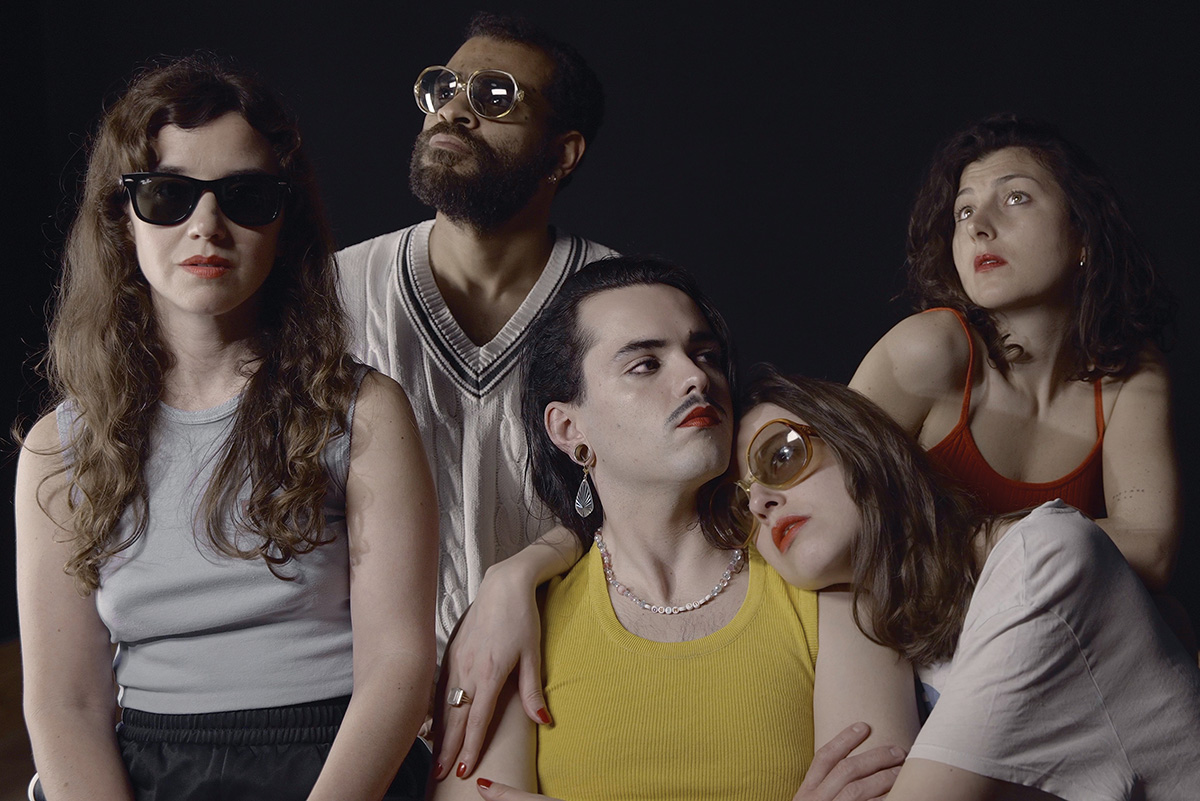
César Vayssié
Ricorda ti che è un film comico
Experimental fiction | hdv | color | 130:0 | France | 2024
Surrounded by the ferocity of the world, five young artists try to transcend contemporary anxiety through a collective production that is itself the subject of the play performed in front of an audience and during which the film was shot. Taking refuge in legendary Hôtel du Belvédère at the French-Spanish border, they attempt a chaotic search from Beethoven, an anachronistic example of a heroic overcoming of the catastrophe: making music without hearing it, anyway. A story of depression and ecstasy between pathetic and poetic. The existential vertigo of creation as a casual allegory of a consented collective shipwreck. You have to remember that this is a comic film.
César Vayssié spans across several artistic fields and explores the relationship between art and politics. He produces films and performances that conceptualize the diversity of genres and artistic skills. He works with student and young artists in order to explore their relationship with sentimental, artistic and political desire in a troubled society. His works have been displayed all over the world. His movie UFE(UNFILMEVENEMENT) won the Georges de Beauregard national award and the Audience award in the 2016 FID in Marseille. His movie, NE TRAVAILLE PAS (Don’t Work) was awarded the FIPRESCI Award in the 2018 Viennale.
Ana Vaz
Catalogue : 2015Occidente | Experimental doc. | | color | 15:20 | Brazil, France | 2014
Ana Vaz
Occidente
Experimental doc. | | color | 15:20 | Brazil, France | 2014
Antiques become reproducible dinner sets, exotic birds become luxury currency, exploration becomes extreme-sport-tourism, monuments become geodata. A film-poem of an ecology of signs tracing a colonial history repeating itself: celebration and power relations, objects and fetishes, roots and branches, power and class relations in a struggle to find ones' place, ones' sitting around a table.
Ana Vaz (b. 1986, Brazil) is an artist and filmmaker whose films and other expanded works speculate upon the relationships between self and other, myth and history through a cosmology of signs, references and perspectives. Assemblages of found and shot materials, her films combine ethnography and speculation in exploring the frictions and fictions imprinted upon both natural and built environments and its multiple inhabitants. A graduate from the Royal Melbourne Institute of Technology and Le Fresnoy – Studio National des Arts Contemporains, Ana was also a member of SPEAP (experimental research group in art and politics), a project conceived and directed by Bruno Latour. Her films have been showed at a number of international film festivals including the New York Film Festival, Visions du Réel, TIFF Wavelengths, CPH:DOX, Media City and Ann Arbor as well as solo and group shows at Rosa Brux (Brussels), Museum of Contemporary Photography (Chicago) and Temporary Gallery (Cologne). In 2015, she was awarded the Grand Prize for the international competition at Media City Film Festival as well as the Main Prize at Fronteira Experimental and Documentary Film Festival for her film “Occidente”. She is the 2015 recipient of the Kazuko Trust Award presented by the Film Society of Lincoln Center in recognition of artistic excellence and innovation in her moving-image work. Ana is also a founding member of the collective "Coyote" along with Tristan Bera, Nuno da Luz, Elida Hoëg and Clémence Seurat, a cross-disciplinary group working in the fields of ecology, anthropology, ethnology and political science through an array of crosscutting platforms.
Ana Vaz
Catalogue : 2019Olhe bem as montanhas | Experimental doc. | 16mm | color | 30:40 | Brazil, France | 2018
Ana Vaz
Olhe bem as montanhas
Experimental doc. | 16mm | color | 30:40 | Brazil, France | 2018
“Look closely at the mountains!â€: the phrase was coined by artist Manfredo de Souzanetto during Brazil’s years of dictatorship. Mining activities were destroying the environment in the state of Minas Gerais in the south west of the country. Through editing, Ana Vaz draws parallels between this region and the very distant Nord-Pas-de-Calais in northern France, also marked by over three centuries of mining. On one side, eroded mountains plague its inhabitants with deadly landslides. Hollow and gutted, these mountains become the receptacles of a ghostly memory. On the other side, in France, mining waste stacks become mountains and reservoirs of biodiversity, where the frontier between nature and technology is now indiscernible. The filmmaker surprises us with each shot. Poetry takes precedence over any activist or environmental discourse — as in the sequence showing scientists measuring bats in the moonlight. Here, “look closely†steers the film towards details, towards visual and sound elements. Yet, these are never disconnected from the political: a shot of the sky taken from the bottom of a ravine is enough to conjure up the ghosts of eradicated indigenous peoples, whose cave nonetheless paintings continue.
Ana Vaz (b. 1986, BrasÃlia) is an artist and filmmaker whose films and other expanded works speculate upon the relationships between self and other, myth and history through a cosmology of signs, references and perspectives. Assemblages of found and shot materials, her films combine ethnography and speculation in exploring the frictions and fictions imprinted upon both cultivated and savage environments and their multiple inhabitants. A graduate from the Royal Melbourne Institute of Technology and Le Fresnoy – Studio National des Arts Contemporains, Ana was also a member of SPEAP (SciencesPo School of Political Arts), a project conceived and directed by Bruno Latour. Recent screenings of her work include the New York Film Festival – Projections, TIFF Wavelenghts, CPH:DOX, Videobrasil, Courtisane, Cinéma du Réel and Lux Salon. In 2015, she was the recipient of the Kazuko Trust Award presented by the Film Society of Lincoln Center in recognition of artistic excellence and innovation in her moving-image work.
Catalogue : 2017Ha terra! (Terre!) | Video | hdv | color | 12:0 | Brazil | 2016
Ana Vaz
Ha terra! (Terre!)
Video | hdv | color | 12:0 | Brazil | 2016
Há terra! is an encounter, a hunt, a diachronic tale of looking and becoming. As in a game, as in a chase, the film errs between character and land, land and character, predator and prey.
Ana Vaz (b. 1986, Brasília) is an artist and filmmaker whose films and other expanded works speculate upon the relationships between self and other, myth and history through a cosmology of signs, references and perspectives. Assemblages of found and shot materials, her films combine ethnography and speculation in exploring the frictions and fictions imprinted upon both cultivated and savage environments and their multiple inhabitants. A graduate from the Royal Melbourne Institute of Technology and Le Fresnoy – Studio National des Arts Contemporains, Ana was also a member of SPEAP (SciencesPo School of Political Arts), a project conceived and directed by Bruno Latour. Recent screenings of her work include the New York Film Festival – Projections, TIFF Wavelenghts, CPH:DOX, Videobrasil, Courtisane, Cinéma du Réel and Lux Salon. In 2015, she was the recipient of the Kazuko Trust Award presented by the Film Society of Lincoln Center in recognition of artistic excellence and innovation in her moving-image work. Ana is also a founding member of the collective "Coyote" along with Tristan Bera, Nuno da Luz, Elida Hoëg and Clémence Seurat, a cross-disciplinary group working in the fields of ecology, anthropology, ethnology and political science through an array of crosscutting platforms.
Pedro Vaz
Catalogue : 2016Monólito | Video | hdv | black and white | 56:10 | Portugal | 2013
Pedro Vaz
Monólito
Video | hdv | black and white | 56:10 | Portugal | 2013
A young man, the lonely character of this tale, is on a journey of (self) discovery inside an unbounded, abstract space, where primitive Nature reigns. In this space, the faint glimmers of the Man passage are offered by some constructions in ruins. However, most of the surrounding is uncharted Nature, this seems to have a magnetic effect on the character who, still an outsider, feels the urge to explore. Although he doesn`t know exactly what he is searching for, his journey is ordained by a calling – and his (uphill) journey progressively becomes more grueling.
Pedro Vaz (Maputo, 1977) obtains a degree in Fine Arts - Painting, Faculty of Fine Arts, University of Lisbon in 2006. This year, he exposed Atlântica individually in Baró Gallery in São Paulo, Brazil, Neblina in Galeria 111, Lisbon and Monólito in Casa da Cerca - Contemporary Art Centre in Almada, Portugal. In 2014 was awarded in the international competition "Beers Award for Emerging Contemporary Art" in London, and was granted a scholarship for the development of the project "Tour du Mont-Blanc" by the Calouste Gulbenkian Foundation and the Duplacena. In the same year, Pedro Vaz exhibits: "Tour du Mont-Blanc" integrated into the Festival Temps D`images 2014 and presented at the MNAC: National Museum of Contemporary Art Chiado, in Lisbon; "Stimmung" exhibited in CAPC - Circle of Fine Arts of Coimbra and co-exhibits "Raukoon - Pedro Vaz X João Queiroz" at CAPC (Coimbra Fine Arts Circle) alongside another project "50 Years of Galeria 111" in Lisbon. Pedro Vaz, lives and works in Lisbon and Sao Paulo.
Ana Vaz
Catalogue : 2023A árvore | Experimental doc. | 16mm | color | 20:32 | Brazil | 2022

Ana Vaz
A árvore
Experimental doc. | 16mm | color | 20:32 | Brazil | 2022
Emerging from a regular and spontaneous practice of film, A Árvore is an encounter with and an homage to the filmmaker’s father Guilherme Vaz (1948-2018). Major Brazilian artist, composer, experimental musician and maestro, as well as one of the pioneers of conceptual and sound art in Brazil, his compositions often traverse the filmography of Ana Vaz in a constant dialogue between music, sound and place. Guilherme Vaz’s work is marked by his experience living at the recently inaugurated Brasília, where Ana was born, as well as the many years spent collaborating with remote indigenous communities in the Brazilian Amazon. A Árvore is a ghostly ritual woven through the fragments of a recorded conversation between father and daughter transposed to various significant geographies in life lines of both.
Ana Vaz (1986, Brazil) is an artist and filmmaker who works with cinema as an instrument. Her films, or rather her film-poems, travel through territories and events haunted by the perennial consequences of internal and external forms of colonialism, and their footprints on the earth as well as on human and different from human forms. Her practice can also take the shape of writing, critical pedagogy, installations, film programs or ephemeral events, which are expansions or developments of her films. Her works have been presented at film festivals, seminars and institutions such as Locarno Film Festival – Cineasti del presente; Berlinale Forum Expanded; IFFR, Rotterdam; Viennale; Palais de Tokyo, Paris; Pivô, São Paulo; Jeu de Paume, Paris; CPH:Dox; New York Film Festival – Projections; TIFF Wavelengths, Toronto; BFI, London; Cinéma du Réel, Paris; Tate Modern, London; LUX Moving Images, London; Tabakalera, San Sebastián; Whitechapel Gallery, London; MAM Museum of Modern Art, São Paulo; Matadero, Madrid; Jameel Arts Center, Dubai; Mostra de Cinema de São Paulo; Savvy Contemporary, Berlin; among others. She is a recipient of the Sundance Film Institute Nonfiction Grant (2019), the Film Society of Lincoln Center Kazuko Trust Award (2015), as well as grand prizes at Festival dei Popoli (2022), Entrevues Belfort (2022), FIDOCS (2022), Punto de Vista (2020), 25FPS (2020), Cinéma du Réel (2016), Media City Film Festival (2015), Fronteira Experimental and Documentary Film Festival (2015). Ana Vaz is also a founding member of the COYOTE collective, an interdisciplinary group working between ecology and political science through conceptual and experimental formats.
Carlos Vásquez Méndez
Catalogue : 2015Vientos del Oeste/Vientos del Este | Experimental doc. | 16mm | black and white | 15:46 | Chile | 2014
Carlos VÁsquez MÉndez
Vientos del Oeste/Vientos del Este
Experimental doc. | 16mm | black and white | 15:46 | Chile | 2014
Vientos del Oeste/Vientos del Este is a film about the frontier as a junction of eastern and western winds, an imaginary line crossed by multiple traditions, information and modernity embodied in the transit of people and merchandise through the chilean-bolivian high plateau. As an answer to the authority`s denial to film some activities proper to a delicate border between two countries without diplomatic relations, I search an analogy in the wind and its effects in the landscape, which as the frontier, it is also unable to be seen but easily perceived.
I studied at the Escuela de Cine de Chile, after I completed my degree with materials of visual anthropology and cultural studies, I worked at a film lab before moving permanently to Spain. After completing the Master of Creative Documentary at the Pompeu Fabra University, I concentrated on developing my own film work linked to essay and experimental cinema. Simultaneously I also collaborate on projects by other filmmakers, I teach and write about Art and Cinema. In 2012 along with Amanda Villavieja, we created Atelier La Faz, a sound art and experimental cinema laboratory.
Ivar Veermäe
Catalogue : 2025Effelsberg | Experimental doc. | mov | color | 15:3 | Estonia, Germany | 2024
Ivar VeermÄe
Effelsberg
Experimental doc. | mov | color | 15:3 | Estonia, Germany | 2024
The work combines material from the Effelsberg radio telescope in Germany with my conversations with several geoengineering experts. Calm images are overlaid with discussions that follow a wide range of topics – questions about visual models and their real life impact, uncertain- ties connected to geoengineering, questions about power and CO2 mitigation, guesses about climate warming and the probability of stratospheric aerosol injection deploy- ment. The design of one of the world’s largest fully steerable radio telescope in Effelsberg is massive yet mechanically relatively simple. It is used to research distant territories far away from Earth, the formation of stars and the disap- pearance of matter into black holes. Also to detect radio waves from neighboring galaxies. I have chosen this as a research object in order to think about what can be perceived and understood through visibility? How visual simplicity fails to convey the complexity of such sets of relationships? Or how to think of inconceivable scales? Effelsberg stems from my research about solar geoengi- neering, that theoretizises the idea, that it will be pos- sible imitate the activity of volcanoes and thus reduce climate warming. One of the most scientifically studied processes describes the spraying of large amounts of aerosols into the stratosphere, where they would scatter the sun’s radiation and thereby reduce the amount of energy reaching the earth’s surface. It would be a delib- erate intervention in the global climate system, it would have to be done for about a few hundred years, and its fully realised form could not be interrupted without cata- strophic consequences.
Ivar Veermäe (born 1982 in Tallinn, lives and works in Berlin) received a BA in photography from the Estonian Academy of Arts in 2009 and a MA in 2014 at Spatial Strategies department in Weissensee Kunsthochschule Berlin. He has received various scholarships and grants – Kunstfonds Arbeitsstipendium, Edith-Russ-Haus Media Art Grant, Elsa-Neumann-Stipendium Berlin and scholarships from Estonian Cultural Endowment. The artist has had solo exhibitions in Edith-Russ-Haus, Oldenburg, Germany, Gallery im Turm, Berlin, Tallinn Art Hall Gallery, City Gallery of Tallinn, Estonia, AV17 Gallery in Vilnius, Lithuania, Cultural Center Belgrade in Serbia, among others. His work has been exhibited in group exhibitions at Riga Biennale, BIENALSUR in Buenos Aires, Venice Architecture Biennale, transmediale Festival in HKW, Moscow Biennale for Young Art, the Bozar in Brussels, the ZKM in Karlsruhe, Rijksmuseum Twenthe, Netherlands, the Art Museum of Estonia, Art Hall of Tallinn, the Estonian Contemporary Art Museum, the Kulturhuset Bronden in Denmark, the Kunstverein Kassel, the Latvian Centre for Contemporary Art, the Kunstverein Wolfsburg, the Pinnacles Gallery in Australia. His videos are being screened at the Rencontres Internationales in Paris and Berlin, in HeK Basel, transmediale Festival, e-flux.com, MoMa web platform, AND Festival in Manchester, EMAF in Osnabrück, Kasseler Dokfest, Crosstalk festival in Budapest, in Virtual Memorial, Cambodia.
Catalogue : 2018Our Word Our Bond | Experimental doc. | hdv | color | 14:14 | Estonia, Germany | 2017
Ivar VeermÄe
Our Word Our Bond
Experimental doc. | hdv | color | 14:14 | Estonia, Germany | 2017
The film is a journey of tracing the former Baltic Exchange´s building. 1903 it was built in neoclassical Edwardian style in the centre of London and 1992 destroyed by Provisional IRA´s biggest car bomb to the date. After the bombing there were plans to attach parts of Baltic Exchange´s house to a new building in the same location. Before dismantling it was fully documented and catalogued. These plans never materialized and in 2006 two estonian businessmen bought the facade and parts of the trade hall wanting it to be rebuilt in Tallinn. The stones were sent to Estonia, where they have stayed in shipping containers over 10 years (with the exeption of the facade sculptures, which were used in a project by estonian architects and artist in 2016). After the real estates developers won dispute with conservationists Foster and Partners iconic “ Gherkin ” - Swiss Re-s building has been constructed in the former Baltic Exchange´s site. Tracing the stones and the story of former building, in Estonia and London, leads to unpredictable outcomes. For example, terrorist attack being economic consideration; real estate boom in London; redesign of city space by incorporating anti attack measures.
The work of visual artist Ivar Veermäe (born 1982 in Tallinn, Estonia; lives in Berlin) circles around questions of public and private space, mediation processes, architecture and infrastructure, information technology and networks. As a result of long-term artistic research by means of photography, film and sound, his works are presented in versatile ways (such as video, on-site installations, interactive works and performances, also in public space). Ivar Veermäe aims to document and analyze the infrastructure underlying our contemporary culture of data and information. Concentrating on physical and local presence, confronting it with its representations creates a possibility for questions and doubts. His interest lays in hidden or stealty qualities of various spaces and objects. He has had solo exhibitions in Edith-Russ-Haus, Oldenburg, Gallery im Turm, Berlin, Freies Museum Berlin, City Gallery of Tallinn and Hobusepea Gallery in Estonia, among others. His work has been exhibited in group exhibitions at transmediale Festival in HKW, Venice Architecture Biennale, Athens Digital Arts Festival, Moscow Biennale for Young Art, the Bozar in Brussels, the CNB Contemporánea in Buenos Aires, the Zentrum für Kunst und Urbanistic, Forum Factory and Kleine Humboldt Gallery in Berlin, the Art Museum of Estonia, Art Hall of Tallinn, the Estonian Contemporary Art Museum, the Latvian Centre for Contemporary Art, the Kulturhuset Bronden in Denmark, the Old Sugar Factory in Groningen, the Kunstverein Wolfsburg, the Kunstverein Kassel, the Pinnacles Gallery in Australia.
Catalogue : 2015Crystal Computing (Google Inc., St. Ghislain) | Documentary | hdv | color | 9:19 | Estonia, Spain | 2014
Ivar VeermÄe
Crystal Computing (Google Inc., St. Ghislain)
Documentary | hdv | color | 9:19 | Estonia, Spain | 2014
Data in the Cloud seems to be disembodied. But in reality, it does have a physical manifestation, albeit a small one, on the hard drives on internet servers. To cool the servers requires massive amounts of energy, so the data is stored in huge centres that look like factories, complete with chimneys releasing large clouds of vapour into the atmosphere. One of the largest data centres in the world with close to 300 000 servers is in St. Ghislain, Belgium, where Google Inc. uses a code name, Crystal Computing. Ivar Veermäe was not granted permission to visit the centre, so he filmed it from a distance. The distance makes the physical location of the data take on a magical quality, like an unattainable paradise, but with unfavourable auspices.
Ivar Veermäe is visual artist concentrating on issues of public space, mediation processes, new technology and networks. His projects are based on long term artistic research, which goal is to analyze the notions connected to information, networks, materiality, locality and also representation. He has had several solo exhibitions in Berlin and Estonia. His work has been exhibited in group exhibitions at transmediale Festival in HKW, the Zentrum für Kunst und Urbanistic, Forum Factory and Kleine Humboldt Gallery in Berlin, the Art Museum of Estonia, Art Hall of Tallinn, the Estonian Contemporary Art Museum, the Sociale Verzekeringsbank in Holland, the Kulturhuset Bronden in Denmark, the Mamara University in Istanbul. He has participated with perfomances in Hebbel am Ufer, Berlin and in Month of Performance Art Berlin in ACUD Theater. His videos are being screened in various screenings at the AND Festival in Manchester, EMAF in Osnabrück, Crosstalk festival in Budapest, Carneval of eCreativity in India, and in Virtual Memorial, Cambodia. Ivar Veermäe currently lives and works in both Tallinn and Berlin, Germany. He received a BA in photography from the Estonian Academy of Arts in 2009 and a MA in 2014 at Spatial Strategies department in Weissensee Kunsthochschule Berlin. www.ivarveermae.com
Mateo Vega
Catalogue : 2023Center, Ring, Mall | Experimental film | 16mm | color | 17:29 | Peru, Netherlands | 2022
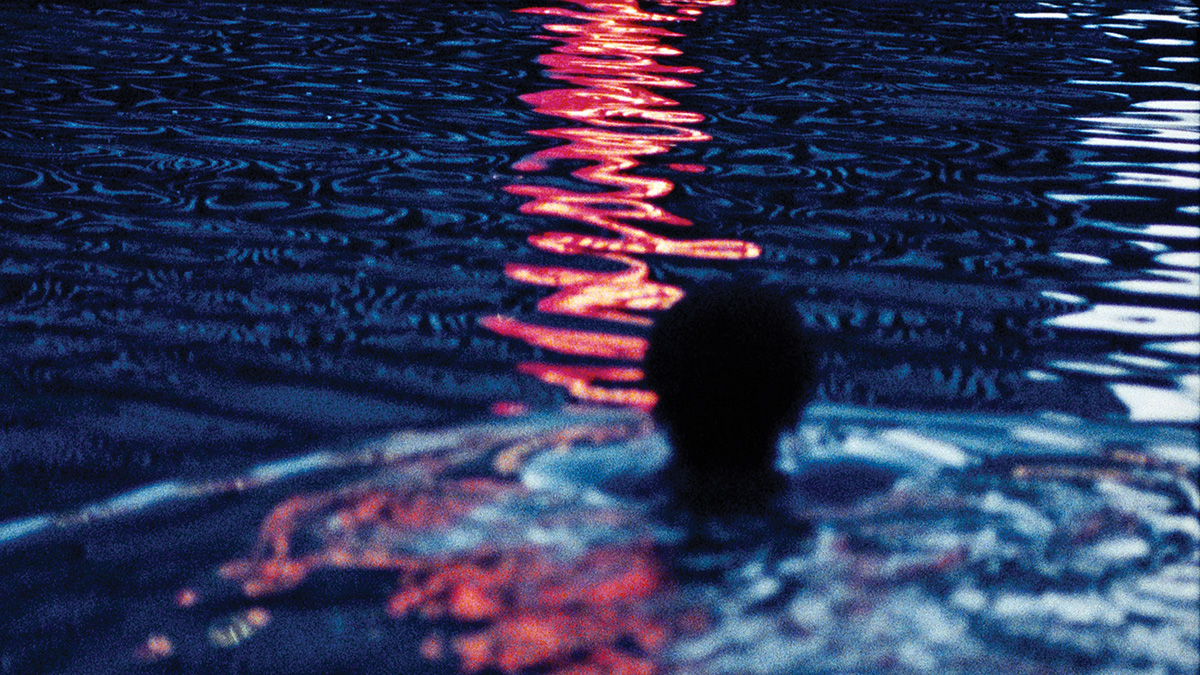
Mateo Vega
Center, Ring, Mall
Experimental film | 16mm | color | 17:29 | Peru, Netherlands | 2022
A multi-vocal triptych through peripheral sites of urban infrastructure: a data center, a ring road, and a run-down mall. All three sites were built with certain worldviews: visions of the future and promises of progress that didn't turn out to be the utopias they presented themselves as. Through multi-lingual texts, a site-specific soundtrack, 16mm and 3D images, the spaces and their implications are subjectively mapped, poeticized and questioned. A poetic materialism of decay, renewal, remembering and projecting, "Center, Ring, Mall" is perhaps a mourning, but one that desires and demands a rebirth.
Mateo Vega (1994) is a filmmaker and artist from Peru raised in Amsterdam, and a graduate of Sandberg Instituut, Amsterdam University College and The New School. The starting point of their work is the subjective experience of (urban) space, and the politics, histories and futurities embedded in landscapes, architecture and infrastructure. Their films and installations have been supported by Mondriaan Fund, Netherlands Film Fund, Amsterdam Fonds voor de Kunst, and shown at places like MoMA, Film at Lincoln Center, International Film Festival Rotterdam, Framer Framed, Amsterdam Museum, and Theater Rotterdam.
Ana Vega
Catalogue : 2019Where Are We Going? (Hey Siri) | Video | hdv | color | 13:59 | Argentina, France | 2018
Ana Vega
Where Are We Going? (Hey Siri)
Video | hdv | color | 13:59 | Argentina, France | 2018
Floating voices in a swaying space. Gone out looking for an object, the two protagonists digress and get lost in the quest for its historical context, get stirred and disenchanted by human relations, spend time together and find travelling companions. A figurative and abstract sequence in chiaroscuro of an indecisive ride, that follows the trajectories of a conversation between invisible and incorporeal characters. Where do you want to go? I'm sorry, I can't answer that. Where are we going? Here's what I've found : _ A young man and his mom, Robin, Siri, Siri, Chris C. and others.
Ana Vega (born in Bahia Blanca, Argentina, 1987) is a visual artist who lives and works in Paris. She studied at the Ecole Nationale Supérieure des Beaux-Arts in Paris and at the Ecole Nationale Supérieure des Arts Appliqués et des Métiers d'Art in Paris ; as well as at Carnegie Mellon University, Pittsburgh (USA) ; at the Pittsburgh Filmmakers Center for the Arts, Pittsburgh (USA) ; at the Centro Cultural Rojas (Buenos Aires). She participated in the 2018-19 collective exhibition « Mademoiselle » curated by Tara Londi at the Regional Contemporary Art Center (CRAC, Sète). Her work was exhibited in 2017 at Arondit, Paris ; the Albert Chanot Contemporary Art Center (Clamart) ; the Arnaud Deschin gallery (Paris) ; Vidéobox#4, Carreau du Temple, Paris ; La Salle de Bains, Lyon, FR ; the Video Art Festival of Carcassonne, Cinéma le Colisée, Carcassonne, FR ; and, precedently, particularly at 22 rue Muller, Paris, 2016 ; in the video library of the Festival les Rencontres Internationales at the Gaîté Lyrique, Paris, 2016 ; at the Image/Imatge Art Center, Orthez, FR, 2015 ; the Palace of Fine Arts, Paris 2015 ; the Escougnou-Cetraro gallery, Paris, 2015 ; Commonwealth & Council, Los Angeles, USA, 2014 ; the Torrance Art Museum, Los Angeles, 2014 ; the Ricard Foundation, Paris, 2014 ; Florence Loewy gallery, Paris, 2013 ; the Centquatre, Paris, 2013 ; Dickerman Gallery, San Francisco, USA, 2013 ; the 58th Salon de Montrouge, Le Beffroi, Montrouge, FR, 2013 ; the Rosenblum Foundation, Paris, 2012.
Ana Vega
Catalogue : 20163 shades (She blue, red, yellow) | Video | hdv | color | 12:18 | Italy | 2014
Ana Vega
3 shades (She blue, red, yellow)
Video | hdv | color | 12:18 | Italy | 2014
She is yours. You might find yourself scanning, your eye guided by a languid sliding pan, detail after detail of waxed body, parts of a car. Other elements, half omitted, slope by, appearing from the edges of the frame. Are they part of a larger story, is there a narrative to follow? She is a vessel, drawing you in. Everything is plausible, yet more enjoyable for moderately enhanced. You will be given treats, something recognizable out of a sequence of slightly abstractions, merely suggestions. Or you might get distracted by these props offered unto your gaze, were they not a source of nearfamiliarity. A Mercedes-Benz, Wave blonde cigarettes. As out of place as usual. It’s a set up. Sunshade. text : Robin Jiro Margerin
Carlos Velandia
Catalogue : 2023La mujer como imagen, el hombre como portador de la mirada | Experimental film | dcp | color and b&w | 7:20 | Colombia | 2022
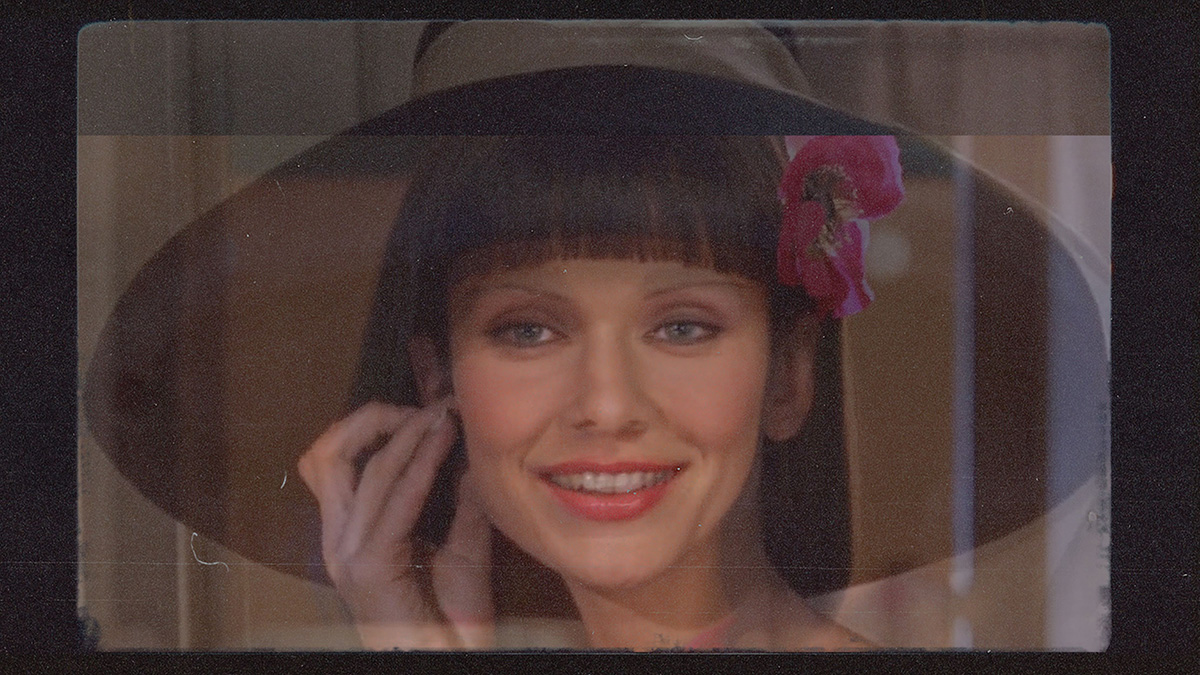
Carlos Velandia
La mujer como imagen, el hombre como portador de la mirada
Experimental film | dcp | color and b&w | 7:20 | Colombia | 2022
Faces, bodies and actions are juxtaposed endlessly. Fragmented pieces of the woman come together and form the volume of what has been her image in the history of cinema; one marked by the routinary domination and exploitation of her body.
Colombian moving image artist and film curator whose work focuses on feminism, anticolonialism, experimental-expanded animation and new technologies. His work has won the ZINEBI Grand Award (Oscar Qualifying) at Bilbao International Festival of Documentary and Short Film, the Silver Lynx Experimental Award at FEST - New Directors | New Films and has premiered several times at Annecy International Animation Festival.
Javier Velazquez Cabrero, Xolisile Bongwana
Catalogue : 2020The Loop | Video | hdv | color | 4:20 | Spain, South Africa | 2018
Javier Velazquez Cabrero, Xolisile Bongwana
The Loop
Video | hdv | color | 4:20 | Spain, South Africa | 2018
We get in touch with the creative processes of both artists. At the beginning of the video, we see a small interview with Xolisile, which shows how the previous interaction was. He does not want to verbally negotiate his interests, proposing an exclusively corporal dialogue. When asked about his opinion on the system of rules with which is proposed to work, Xolisile continues with an enigmatic and powerful career that works as an escape and as a response at the same time.
Martijin Veldhoen
Catalogue : 2006Why do I keep going - FORWARD | Experimental video | dv | color | 6:0 | Netherlands | 2004
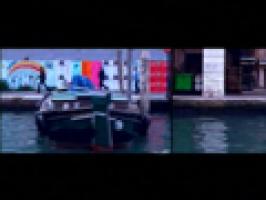
Martijin Veldhoen
Why do I keep going - FORWARD
Experimental video | dv | color | 6:0 | Netherlands | 2004
Going forward feels good. With the wind in your hair on the deck of a ship or the platform of a railway carriage - when the landscape begins to pass more and more quickly before your eyes, your body knows that you are heading for the future. But why does it feel so good to be moving forward? (Why do I keep going) Forward begins with this question, immediately linking the feeling of going forward with `progress`. While images recorded from trains, boats and planes pass us by, we can hear someone thinking aloud; someone who is asking himself questions. Questions about our love of nature and of culture - as sources of harmony and civilization. Because, do nature and culture not obey the same laws as we apply to the economy? Are the evolutions that resulted in fish swimming, and Venice flourishing, not equal to the process that propels the rat race in Manhattan? `Progress` presupposes a direction and a goal, but neither is of great importance to the feeling that you have on a moving boat or train. Forward or backward depends on which way you are looking - and when it comes to `progress`, the direction is ultimately not important either, as long as there is movement.
Veldhoen received several grants from the Fund BKVB and the Mondrian Foundation. He managed to sell several works to private and corporate collections, among whom the ABN-AMRO bank collection and the Bouwfonds Nederlandse Gemeente. During 1999 until 2000 he worked as guest Teacher at art academies Minerva (Groningen) and the HKA (Arnhem). In 2003 he was jury member for the LSVB price and the René Coelho Price. Martijn Veldhoen was asked several times as `external expert` for final exams for several art academies; amongst others: AKI; Enschede, Frank Mohr Institute; Groningen.
Martijn Veldhoen
Catalogue : 2007Public spaces | Experimental fiction | dv | color | 10:0 | Netherlands | 2006
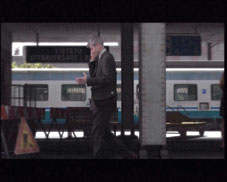
Martijn Veldhoen
Public spaces
Experimental fiction | dv | color | 10:0 | Netherlands | 2006
Once "public space" was a clear concept. It was a kind of democratic medium that could be accessed by everyone, safely and freely available for traffic between people. Now things have changed; thanks to mobile communication systems, we carry our personal space with us like an air bubble, and the public sphere has become a set of subsets. Everyone is always connected to something or someone else, so that the space between has taken on a virtual form of its own, which constantly changes with time. What is left over between the subsets has the characteristics of a vacuum; it generates forces. It sucks in a great many individuals who cannot or will not 'participate', or who do not have or do not want to have access to the means that link the individual bubbles. Veldhoen shows us how differently we now perceive public space, certainly not as a safe place any more. Even though the voiceover has adopted a contemplative tone, there is still a sense of repressed threat and a feeling of paranoia; the word Bomb can be read on a wall, like graffiti. The main characters are moving through a space that Veldhoen has portrayed with a kind of 'moving photography' technique, whereby a two-dimensional image becomes three-dimensional and starts to move. We see telling images of a train, a metro station, and a market. It is a series of modern 'guilty spots'. We cannot see the 'usual suspects', but time is ticking on mercilessly; and the heralded occurrence will take place.
Martijn Veldhoen was born in Holland in 1962. Her work has been exhibited in places like The CaixaForum Palma, in Palma de Majorque, Le Fresnoy, Studio national des arts contemporains in Tourcoing, la Sala Rekalde in Bilbao, la Fundación La Caixa - CaixaForum in Barcelone, the National Museum of Contemporary Art (MNAC) in Bucharest, the Bonn Art Museum Kunstmuseum, the Dorottya Gallery in Budapest, and the Städtische Galerie im Buntentor in Brême.
Nikos Veliotis
Catalogue : 2006ObJet | Art vidéo | dv | color | 11:28 | Greece | 2004
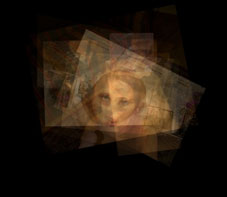
Nikos Veliotis
ObJet
Art vidéo | dv | color | 11:28 | Greece | 2004
obJet?s material consists entirely of low-resolution free porn pictures. This porn ?objet trouve? was downloaded via the Internet by following dozens of spam emails that offered free pictures. Shortly after the collection of the material the account was terminated since due to the large amount of spam it was no longer manageable! The video proceeds formally by dramatically slowing down the frenetic rhythm of on screen intercourse encountered in porn movies through the use of a simple kind of animation: multiple layers of still images in soft pendulum motion. The animation generates a perpetual emergence of dislocated body parts and figures which surface in the midst of a binding, ondulating confusion only to be swallowed by the next wave of images. The superposition of images conceals as much as it reveals. Only the emerging slices of faces and bodies suggest a, multilayered reality invisible to the naked eye.
Video artist trapped inside the body of a musician. Working on static overlays of digital trash and other digital found material (through internet or broadcasts) combined with live sound or silence. Also active in the experimental music field as a cellist and video artist.
Javiera Veliz, -
Catalogue : 2020Vivir allì no es el infierno, es el fuego del desierto. La plenitud de la vida que quedó ahí como un árbol | Documentary | hdv | color | 58:34 | Chile | 2018
Javiera Veliz, -
Vivir allì no es el infierno, es el fuego del desierto. La plenitud de la vida que quedó ahí como un árbol
Documentary | hdv | color | 58:34 | Chile | 2018
Le vent, les oiseaux, la sueur, les mains, un chariot, la sécheresse et le sable. Sera t-il possible de disparaître dans le désert? Totoral est un village qui disparaît dans ses propres collines. Un lieu enraciné à la terre, à ses animaux et à la survie. Le désert change en permanence. Les arbres sèchent et les hommes, en compagnie de ses animaux, effacent leur traces ainsi que le passage du temps.
Javiera was born in 1986 in Copiapo, Chile, Where she stu- died visual arts and cinema. In 2009 she founded Pocilga Productions with Bárbara Pestan. In 2013 she studied in EICTV, Cuba. In 2015 she studied a Master’s in Direction of Photography at Escac, Spain. She`d realized several works as producer and DOP. “Living there...” her`s first film as director has it ?s interna- tional premiere in Cinema du réel where she won Tenk`s Prize. Actually she`s producing “To see is an act“ and realizing her second film “Marine water”.
Vangjush Vellahu
Catalogue : 2023Land X | Experimental video | 4k | color | 23:41 | Albania, Somalia | 2022
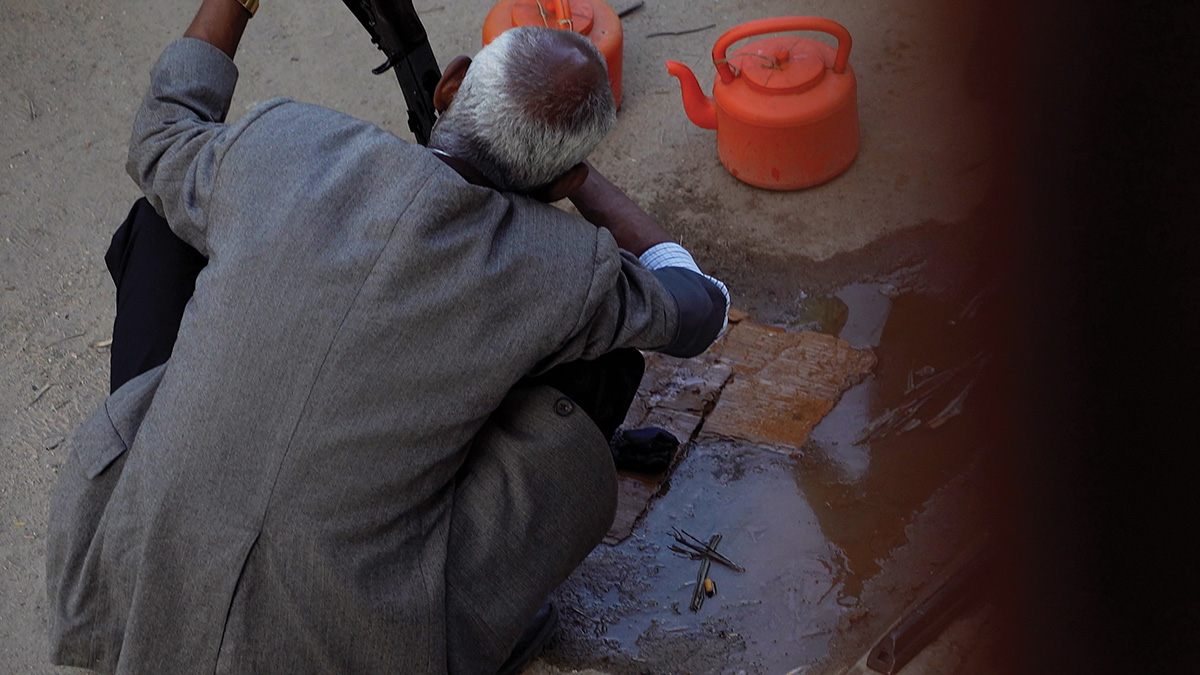
Vangjush Vellahu
Land X
Experimental video | 4k | color | 23:41 | Albania, Somalia | 2022
This video was filmed in February 2022 from one of the rooms at Oriental Hotel in the city center of Hargeisa, interfering in a way in between the two opposing positions to a place that it is being referred to as fictional and real at the same time. -Position One: I was never here and therefore I never filmed this video, these images don't exist because this place doesn't, the hotel, the buildings around, the people and that military entity. The filming took place entirely somewhere else. -Position Two: I certainly was here and therefore I certainly filmed this video, these images do exist because this place does, the hotel, the buildings around, the people and that military entity. The filming took place entirely in Somaliland. Both of this positions emphasize two points of political actions, one being exterior and the other interior.
Vangjush Vellahu born in 1987 in Pogradec, Albania, lives and works between Berlin and Tirana.
Catalogue : 2021A Tool of Resistance | Video | hdv | color | 29:55 | Albania, Germany | 2020
Vangjush Vellahu
A Tool of Resistance
Video | hdv | color | 29:55 | Albania, Germany | 2020
This two channel video installation is an introduction to what is happening in the West Bank, between Palestinians and the Israeli army. This video installation is designed to narrate the everyday reality of the Palestinians at large through the micro example of the city of Hebron and its resistance to the Israeli army. In order to be able to develop this narrative, the artist traveled to the region, where he came into contact with Human Rights Defenders, a local group who makes use of the camera and video footage as a tool of peaceful resistance. This video installation contains mostly footage filmed by the artist but includes also other archival materials, allowing this way an insight into the Palestinian history and reality. The work explores the role and nature of the camera and video especially in situations of conflicts and oppressions. This work is part of the ongoing series called "Fragments" that he has made, since 2015, in different territories affected by long years of frozen conflicts.
Vangjush Vellahu was born in 1987 in Pogradec, Albania and currently lives and works between Tirana and Berlin. In his work he is interested in travel as a medium to collect and tell stories. His works intertwine urban histories of entities that from an ideological and political stand point remain on the margins of recognition. In 2018 he published his first travelogue “Fragments I - Where stories cut across the land” that came along with his video solo show with the same title. His works have been exhibited, among others at: Times Art Center, Berlin, DE; Museu d´Història de Catalunya, Barcelona, ES; Museum of Modern and Contemporary Art, Rijeka, HR; Škuc Gallery, Ljubljana, SI; Hamburger Bahnhof, Berlin, DE; State Museum of Contemporary Art, Thessaloniki, GR; Museum of Contemporary Art, Acri, IT; National Gallery of Arts, Tirana, AL; National Historical Museum, Tirana, AL; National Gallery, Prague, CZ; etc.
Dimitri Venkov
Catalogue : 2017Krisis | Experimental doc. | 4k | color | 32:26 | Russia | 2016
Dimitri Venkov
Krisis
Experimental doc. | 4k | color | 32:26 | Russia | 2016
The video Krisis is a reenactment of a facebook discussion among Russian and Ukrainian artists, which took place in December 2013 upon the tear-down of the statue of Lenin in Kiev during the early stages of the Maidan protests. The discussion unfolds at a pivoting point in modern history. In fact, it occurs at the very moment when History bursts into the scene as a force surpassing individual actors and dragging them into its course in an indefinite capacity somewhere between that of a witness and participant. Krisis should also be understood here as trial or judgment, where twelve jurors debate the meaning of the historical event but fail to pass a verdict. Just as with Pilate’s judgment of Jesus, the decision is not reached and the trial takes on “a continuous and implacable course, an incessant passing and progress through time.” The historical crisis is bound to last like trauma in psychoanalysis: separated from its original context, it reappears in pathological forms in every sphere and at every moment. Structurally and thematically it is a remake of the Sidney Lumet film “Twelve Angry Men.” This classic is an idealized image of the American democracy based on inclusiveness. In the film Krisis the situation is reversed: although the characters belong to the same circle or community, their positions are irreconcilable and mutually exclusive thus making a compromise impossible. There is no way out of this argument but to split apart. The film Krisis plays out a metaphor of a society divided by history, politics, and aesthetics. New challenges further polarize it and augment its internal contradictions revealing a crisis as a state of imminent threat that the society presents for itself.
Dimitri Venkov (born 1980) is a video artist and filmmaker working across art, film, and academic institutional contexts. His works have been presented at Vth Moscow Biennale, First Bergen Assembly, Hayward Gallery, Kino der Kunst, Documenta 14,Oberhausen and Moscow Film Festivals, and others. In 2012 he received the Young Artist Kandinsky Prize for his film Mad Mimes. He was nominated for the Moscow Innovation Prize and St. Petersburg Kuryokhin Prize. Dimitri is a professor of videoart at Moscow Rodchenko School of Photography and Multimedia and has lectured at Yale University, Moscow State University, Moscow Art and Multimedia Museum.